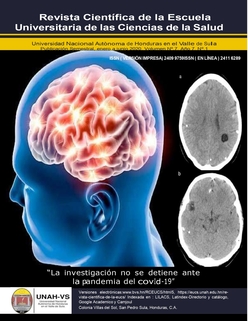Enfermedad de Hirschsprung y Apendicitis en paciente pediatrico: reporte de caso
DOI:
https://doi.org/10.5377/rceucs.v7i1.10947Palabras clave:
Apendicitis, Enfermedad de Hirschsprung, EstreñimientoResumen
La enfermedad de Hirschsprung es una malformación del sistema nervioso entérico, caracterizada por falta de células ganglionares en plexo submucoso y mientérico en pared distal del colon. En el 80% solo existe afectación del recto-sigma, sin embargo, pueden encontrarse casos de aganglionosis total.
Reporte de Caso: Se presenta pre-escolar masculino de 4 años de edad, procedente de La Iguala, Lempira, Honduras, con historia de constipación y distensión abdominal de dos años de evolución, que ha empeorado progresivamente, y se atenua- ba con el uso de enemas cada dos días para poder defecar. En mayo de 2016 llega al Hospital Mario Catarino Rivas, donde se le realizó una laparotomía exploratoria de emergencia debido a la presencia de deterioro clínico por constipación y distensión abdominal, acompañada de vómitos con restos alimenticios y fiebre alta de una semana de evolu- ción. En dicha operación se realizó colectomía par- cial izquierda, además se realizó una colostomía terapéutica y se diagnósticó enfermedad de Hirs- chsprung mediante biopsia, además del hallazgo incidental de apendicitis, se realizó apendicectomía obteniendo en general, una evolución satisfactoria. El estudio histopatológico de la biopsia del recto es el estándar de oro para realizar el diagnóstico. La ausencia de células ganglionares en el plexo submucoso con la tinción hematoxilina y eosina establece el diagnóstico. El tratamiento de la enfermedad de Hirschsprung es de tipo quirúrgico y se busca la eliminación del segmento colónico afectado, de manera que se pueda lograr una anastomosis del colon proximal y distal al área agangliónica.
Descargas
831




